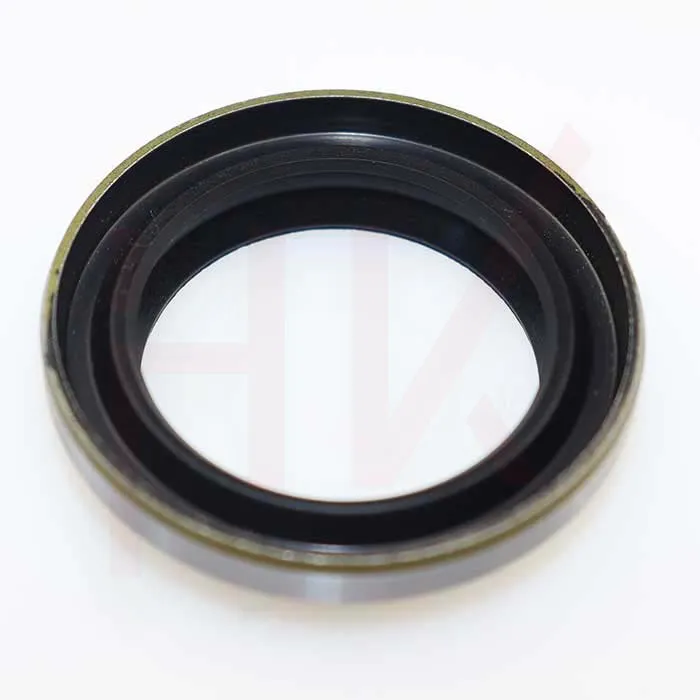ნოე . 26, 2024 23:31 Back to list
Choosing the Right Metric Rod Wiper Seals for Optimal Performance and Durability
Understanding Metric Rod Wiper Seals Essentials for Optimal Performance
In the intricate world of hydraulic systems, the importance of effective sealing solutions cannot be overstated. Among the various sealing mechanisms, metric rod wiper seals stand out as a crucial component for ensuring the longevity and efficiency of hydraulic cylinders. This article will delve into what metric rod wiper seals are, their design, functionality, applications, and maintenance practices, all aimed at enhancing your understanding of these critical sealing elements.
What Are Metric Rod Wiper Seals?
Metric rod wiper seals, also known simply as wipers or dust seals, are designed to fit the metric sizes of hydraulic rods. Their primary function is to prevent the ingress of dirt, dust, and other contaminants into the hydraulic cylinder while allowing the rod to move freely. These seals are typically made from durable materials such as polyurethane, nitrile rubber, or other elastomers, which offer excellent wear resistance and resilience against various environmental conditions.
Design Features and Variations
The design of metric rod wiper seals can vary significantly depending on the application and specific requirements. They often feature a lip that wipes the rod as it extends and retracts, ensuring that any debris on the rod’s surface is scraped off before it can enter the hydraulic cylinder. Different profiles are available, including single-lip and double-lip designs, where double-lip seals provide an extra layer of protection against contaminants.
Moreover, these seals are available in a range of sizes, with metric dimensions allowing for precise fitting in various industrial and commercial applications. It's critical to choose the appropriate size and type of seal; an ill-fitting wiper seal can lead to premature wear of the hydraulic components and increased maintenance costs.
Applications Across Industries
metric rod wiper seals

Metric rod wiper seals find applications in a myriad of industries, including automotive, manufacturing, construction, and agriculture. In hydraulic cylinders used in construction equipment, for example, wiper seals play an essential role by preventing dirt and debris from entering, which can significantly prolong the life of hydraulic systems subjected to harsh working conditions.
Similarly, in the automotive sector, these seals are crucial in hydraulic steering systems and braking systems, where the presence of contaminants could lead to system failure. The reliability of metric rod wiper seals in high-stress cylinder applications makes them a preferred choice for engineers and designers across various fields.
Maintenance and Best Practices
Maintaining metric rod wiper seals is vital for the overall efficiency of hydraulic systems. Regular inspection is essential to identify wear and tear signs. During inspections, look for cracks, tears, or deformation in the seals, as any defects can compromise performance.
Additionally, keeping the hydraulic system clean and ensuring that the working environment is as free from dust and debris as possible will aid in the longevity of the seals. Operators should also ensure that hydraulic fluids are at the correct levels and that they meet specifications for compatibility with seal materials.
To enhance the performance and life expectancy of metric rod wiper seals, it’s also advisable to follow manufacturer guidelines regarding installation. Incorrect installation can lead to excessive wear or damage to the seals, resulting in leaks and system inefficiencies.
Conclusion
In summary, metric rod wiper seals are fundamental components that serve to protect hydraulic systems from contamination, ensuring both reliability and longevity. Understanding their design, functionality, and maintenance requirements is vital for anyone involved in the operation and management of hydraulic equipment. By investing in high-quality wiper seals and adhering to best practices, industries can significantly reduce downtime and maintenance costs, ultimately leading to enhanced productivity and efficiency.
-
TCN Oil Seal Metal Ring Reinforcement for Heavy Machinery
NewsJul.25,2025
-
Rotary Lip Seal Spring-Loaded Design for High-Speed Applications
NewsJul.25,2025
-
Hydraulic Cylinder Seals Polyurethane Material for High-Impact Jobs
NewsJul.25,2025
-
High Pressure Oil Seal Polyurethane Coating Wear Resistance
NewsJul.25,2025
-
Dust Proof Seal Double Lip Design for Construction Equipment
NewsJul.25,2025
-
Hub Seal Polyurethane Wear Resistance in Agricultural Vehicles
NewsJul.25,2025
-
The Trans-formative Journey of Wheel Hub Oil Seals
NewsJun.06,2025
Products categories
















